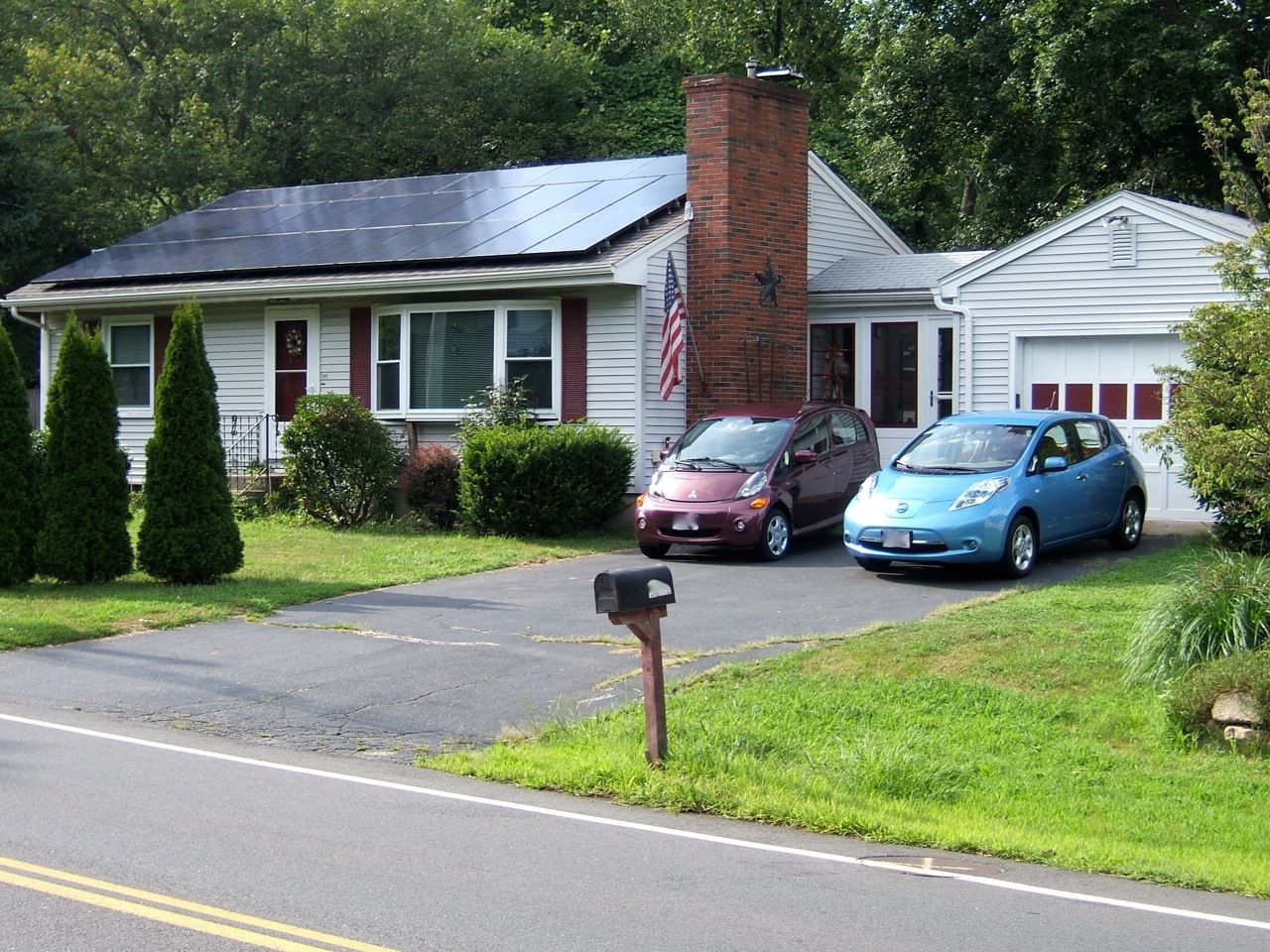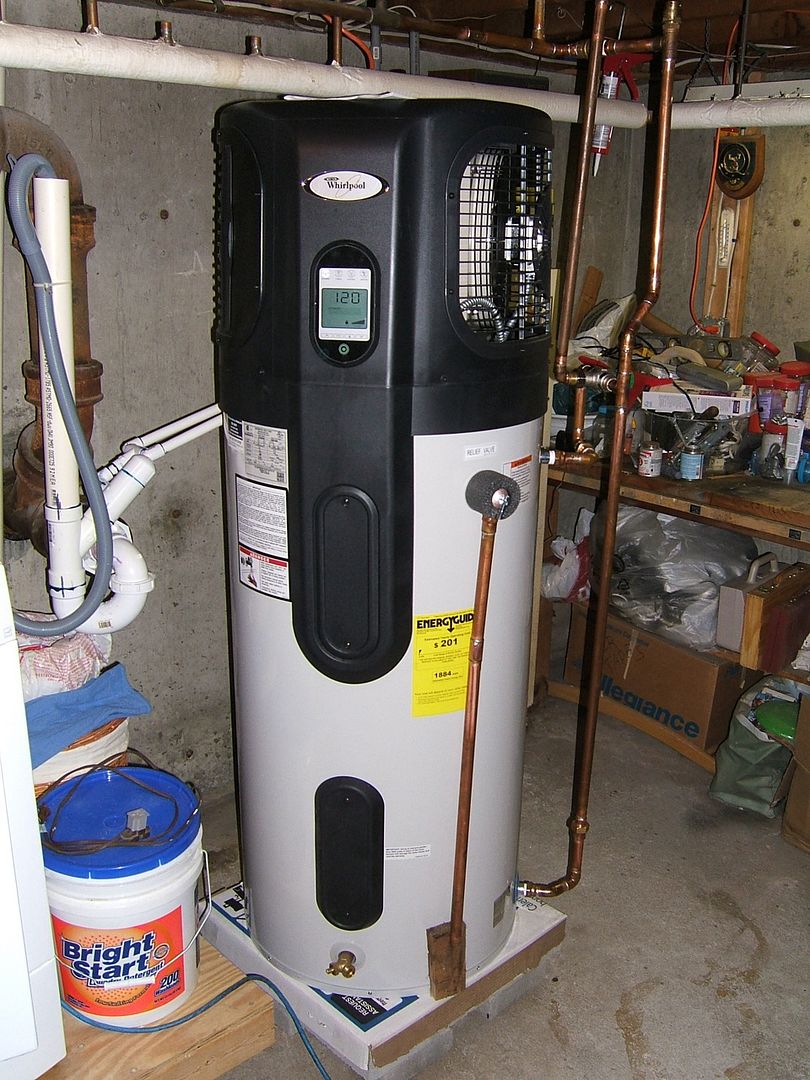 11-28-2013, 03:07 PM
11-28-2013, 03:07 PM
|
#291 (permalink)
|
|
EcoModding Lurker
Join Date: Nov 2013
Location: Europe
Posts: 30
Thanks: 0
Thanked 9 Times in 3 Posts
|
If you look on page 16, one can see that German Solar- and Windfarms still generated over 80% of the average production even in their worst combined month: http://www.ise.fraunhofer.de/de/down...ergie-2012.pdf
Interconnected Solar- and Windfarms in Europe (as opposed to just Germany) produce even more consistently, 100% renewable power is easily feasible with 10% to 20% of overbuilding of Solar- and Windpower (curtailing is also easy), considering the fact that the hydro capacity already lasts for 22 days (and hydro power capacity can be increased without building new dams): European hydro capacity compared to the demand for electricity | Claverton Group
Also, electrifying the heating and hot water sector would add a lot of flexibility to the grid as storing heat energy is easy, cheap and 'charging' of a hot water tank can be done an unlimited number of times (as opposed to batteries). https://commons.wikimedia.org/wiki/F...her_Theiss.JPG
A roof over a parking space can produce more power than the electric car underneath consumes in one year. 
It is simply impossible to do the same with corn growing on a roof to produce ethanol...
I don't drive an electric car because they are currently still too expensive.
Also, I believe it makes more sense to electrify the heating and hot water sector first. One shouldn't waste expensively imported fossil fuels just to heat water.
|
|
|

|
|
The Following 4 Users Say Thank You to twinair For This Useful Post:
|
|
 Today Today
|
|
|
|
 Other popular topics in this forum...
Other popular topics in this forum...
|
|
|
|
 11-28-2013, 07:06 PM
11-28-2013, 07:06 PM
|
#292 (permalink)
|
|
EcoModding Lurker
Join Date: Nov 2013
Location: england
Posts: 2
Thanks: 3
Thanked 0 Times in 0 Posts
|
Quote:
Originally Posted by IamIan

Green = Good
Red = Error
|
The majority of environmental impact, with cars is when they are been built, not with use.
Considering the effort required to ship materials to the factory. The cost of lighting and heating. Molding/shaping of parts, machining, welding, chemically treating. Then painting, and disposal of contaminated waste. Transport of cars to dealers. And transport of staff to and from work place. Really you think that statement is false ? |
|
|

|
 11-28-2013, 08:21 PM
11-28-2013, 08:21 PM
|
#293 (permalink)
|
|
Master EcoModder
Join Date: Aug 2010
Location: Philippines
Posts: 2,173
Thanks: 1,739
Thanked 589 Times in 401 Posts
|
The costs of shipping*, lighting and heating are spread out over a very large number of units that leave the factory.
Building one car has a huge environmental impact per unit. that's why prototypes cost in the hundreds of thousands to millions of dollars. (That's cost. Not sale price)
Building thousands of cars on a line lessens the impact per unit. Which is why it costs a lot less to build a gasoline car than it costs to fuel one up over the next decade of service.
Money is not an exact way to measure environmental impact, but it's a good guide. And note... you can run a factory on renewable resources. Hydropower, solar, geothermal, etcetera (and the cost of power that goes to producing one car is very, very little).
You can only run a gasoline car on gasoline. To the tune of around $10k per 100k miles. Over a lifespan of 200-300k miles (not unreasonable considering today's engines), you spend more on gasoline than on the car. Gasoline which is 90% non-renewable and causes direct waste.
Let's not forget, due to lower profit margins and taxes due to bulk sales and the like, this is not a 1:1 comparison. If you break it down to impact alone, it's likely that a car's environmental impact from use (including waste oil and coolant, etcetera) will exceed that from production at under 100k miles.
-----
*Shipping just one car or its parts on its own boat is a ridiculous waste of resources. Thankfully, cars share cargo ships. Even if you were to ship it yourself, the cost of shipping itself, exclusive of taxes, is just a few hundred dollars. It costs much more for the dealership to drive the car cross state to deliver it.
|
|
|

|
 11-28-2013, 08:47 PM
11-28-2013, 08:47 PM
|
#294 (permalink)
|
|
Master EcoModder
Join Date: May 2008
Location: Maynard, MA Eaarth
Posts: 7,908
Thanks: 3,475
Thanked 2,953 Times in 1,846 Posts
|
The fuel used in ICE cars is by far the majority of the energy used by/for an individual car. For an EV, the energy used to drive it is significantly less, so the proportion of energy used to produce it, is probably higher, but overall the total energy used by an EV is much less than any ICE.
Let's not forget that it takes a lot of electricity to run an ICE; enough to let you run an EV as far as a typical car does on each gallon of fuel. So *all* the fossil fuel is above and beyond the energy overhead of an EV.
Gasoline is an incredibly energy dense fuel. Each gallon of gasoline is equivalent to something 60+ sticks of dynamite. It takes millions and millions of years in very specific conditions to turn about 92 tons of biological material for each gallon of gasoline. That is a whole lot more energy than a day of sunshine on a medium sized PV system on someone's house.
|
|
|

|
 11-29-2013, 10:46 PM
11-29-2013, 10:46 PM
|
#295 (permalink)
|
|
Master EcoModder
Join Date: Dec 2010
Location: RI
Posts: 692
Thanks: 371
Thanked 227 Times in 140 Posts
|
Quote:
Originally Posted by mercedes308

The majority of environmental impact, with cars is when they are been built, not with use.
Considering the effort required to ship materials to the factory. The cost of lighting and heating. Molding/shaping of parts, machining, welding, chemically treating. Then painting, and disposal of contaminated waste. Transport of cars to dealers. And transport of staff to and from work place. Really you think that statement is false ?
|
I know it is.
( I can explain it multiple different ways if you like , but the result is the same. I won't bore you unless you ask for the long version. )
Do you have evidence to site of it being as you claimed?
( Or was that just a shoot from the hip guess? ) |
|
|

|
 11-29-2013, 11:21 PM
11-29-2013, 11:21 PM
|
#296 (permalink)
|
|
Corporate imperialist
Join Date: Jul 2011
Location: NewMexico (USA)
Posts: 11,312
Thanks: 273
Thanked 3,584 Times in 2,845 Posts
|
Quote:
Originally Posted by twinair

A roof over a parking space can produce more power than the electric car underneath consumes in one year.
|
How much did that cost to build?
__________________
1984 chevy suburban, custom made 6.5L diesel turbocharged with a Garrett T76 and Holset HE351VE, 22:1 compression 13psi of intercooled boost.
1989 firebird mostly stock. Aside from the 6-speed manual trans, corvette gen 5 front brakes, 1LE drive shaft, 4th Gen disc brake fbody rear end.
2011 leaf SL, white, portable 240v CHAdeMO, trailer hitch, new batt as of 2014.
|
|
|

|
 11-30-2013, 07:12 AM
11-30-2013, 07:12 AM
|
#297 (permalink)
|
|
Master EcoWalker
Join Date: Dec 2012
Location: Nieuwegein, the Netherlands
Posts: 4,004
Thanks: 1,715
Thanked 2,252 Times in 1,458 Posts
|
Quote:
Originally Posted by oil pan 4

How much did that cost to build?
|
18 large solar panels and some woodwork... approx. 2000 to 3000 US gallons.
__________________
2011 Honda Insight + HID, LEDs, tiny PV panel, extra brake pad return springs, neutral wheel alignment, 44/42 PSI (air), PHEV light (inop), tightened wheel nut.
  lifetime FE over 0.2 Gigameter or 0.13 Megamile.

For confirmation go to people just like you.
For education go to people unlike yourself.
|
|
|

|
 11-30-2013, 07:57 AM
11-30-2013, 07:57 AM
|
#298 (permalink)
|
|
EcoModding Lurker
Join Date: Nov 2013
Location: Europe
Posts: 30
Thanks: 0
Thanked 9 Times in 3 Posts
|
Although wood is cheap and plentiful (otherwise it wouldn't be used to just burn it), one can obviously also place a PV-system on an existing house or garage roof (the parking roof was just there to explain, that it is not feasible to grow enough corn ethanol at home to power a gasoline powered car):
In Germany complete small 5 kW PV-system with brandname PV-modules are built for €1.4/W (including import taxes) which is approx. $1.9/W (incl. installation). 32xxx | 5kWp || 1382
(German electricians/roofers don't have lower wages than their American counterparts).
At 1500 sunhours (North America) per year, 1 W of PV produces 30 kWh in 20 years (since PV-modules have no moving parts, there's no reason why they shouldn't even last twice as long: ).
So, 1 kWh of roof power = 6.3 cents/kWh
At an 80% EV efficiency that's 7.9 cents/kWh one pays for the roof-energy at the wheels.
1 gallon of gasoline contains approx. 33 kWh. At an overall efficiency of 25% from tank to wheel (incl. engine heat/drivetrain losses and idling/partial load losses), 8 kWh /gallon are left.
At $3.50 per gallon of gasoline during the next 20 years (no inflation - which is doubtful) the average gasoline costs are 43 cents/kWh: Approximately 5 times more than what one would pay for homegrown as opposed to mostly imported energy (not including the costs to protect interests abroad, prevent potential oil embargos from re-occurring and costs of pollution, CO2, oil-sands, missing import-taxes and what not).

Last edited by twinair; 11-30-2013 at 08:54 AM..
|
|
|

|
|
The Following 3 Users Say Thank You to twinair For This Useful Post:
|
|
 11-30-2013, 09:14 AM
11-30-2013, 09:14 AM
|
#299 (permalink)
|
|
Master EcoModder
Join Date: May 2008
Location: Maynard, MA Eaarth
Posts: 7,908
Thanks: 3,475
Thanked 2,953 Times in 1,846 Posts
|
It takes 7.5-8.5kWh of electricity to produce a gallon of gas.
It also takes a lot of natural gas, and a lot of water to produce both the natural gas and the oil, when fracking. Even more water and natural gas and electricity is used for tar sands bitumen. Oil has to be transported, and then it gets burned.
The overhead of energy embedded in gasoline is far greater than for electricity.

These EV's cost between 2-3¢ per mile before the solar PV system was installed. Now, it is 50-75% less than that.

This heat pump hot water heater replaced an oil-fired heater that was costing ~$1,000 per year to run. This heater is also getting powered largely by the solar PV system, and also the central A/C for the house, as well.
Last edited by NeilBlanchard; 11-30-2013 at 09:21 AM..
|
|
|

|
|
The Following 3 Users Say Thank You to NeilBlanchard For This Useful Post:
|
|
 11-30-2013, 10:02 PM
11-30-2013, 10:02 PM
|
#300 (permalink)
|
|
Corporate imperialist
Join Date: Jul 2011
Location: NewMexico (USA)
Posts: 11,312
Thanks: 273
Thanked 3,584 Times in 2,845 Posts
|
Quote:
Originally Posted by RedDevil

18 large solar panels and some woodwork... approx. 2000 to 3000 US gallons.
|
So too much for about 80% of people.
__________________
1984 chevy suburban, custom made 6.5L diesel turbocharged with a Garrett T76 and Holset HE351VE, 22:1 compression 13psi of intercooled boost.
1989 firebird mostly stock. Aside from the 6-speed manual trans, corvette gen 5 front brakes, 1LE drive shaft, 4th Gen disc brake fbody rear end.
2011 leaf SL, white, portable 240v CHAdeMO, trailer hitch, new batt as of 2014.
|
|
|

|
|